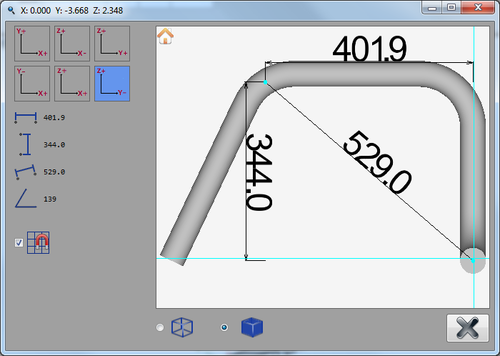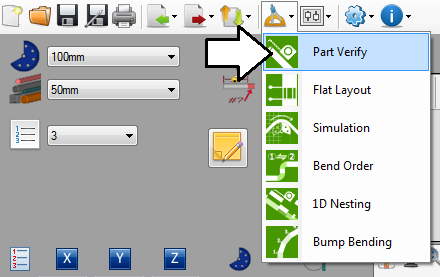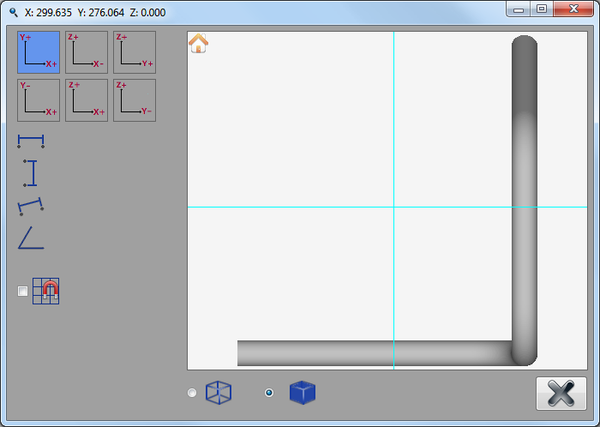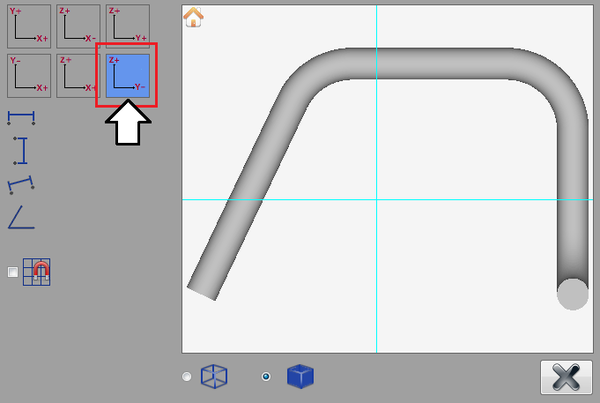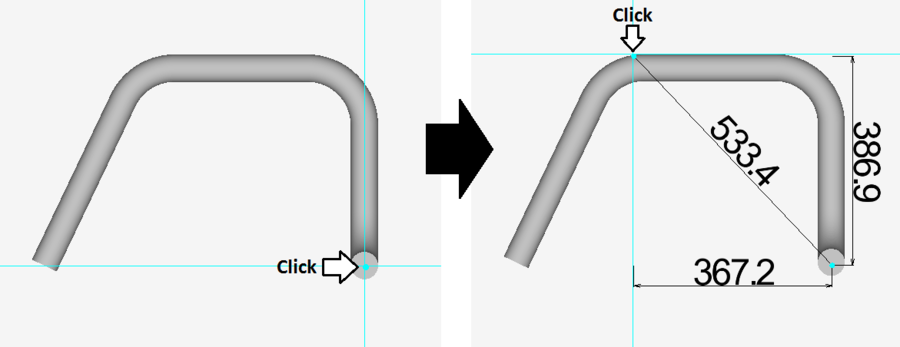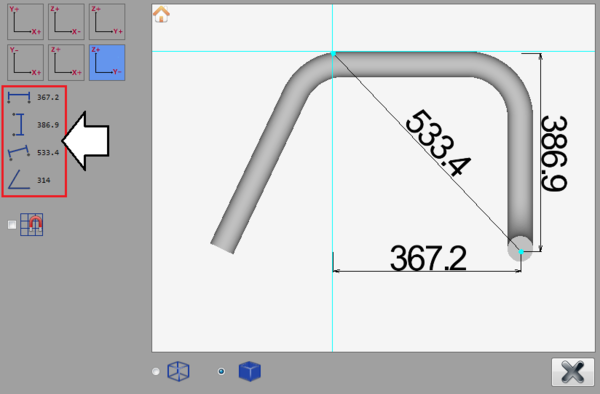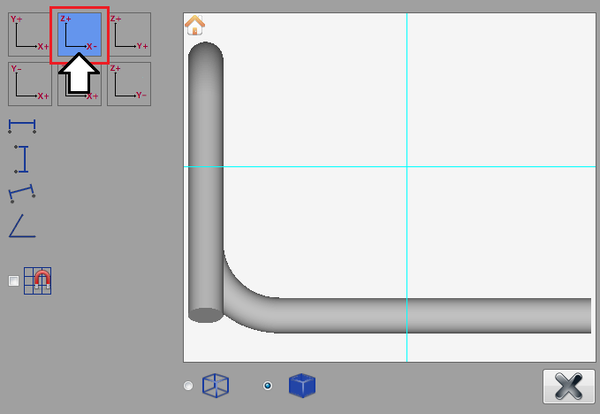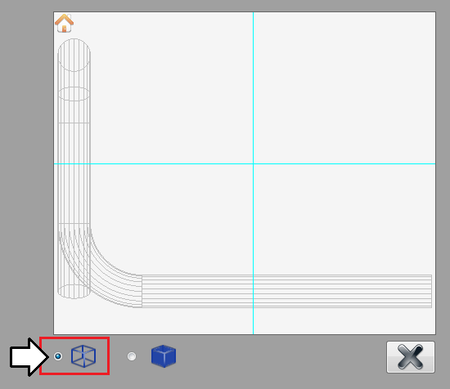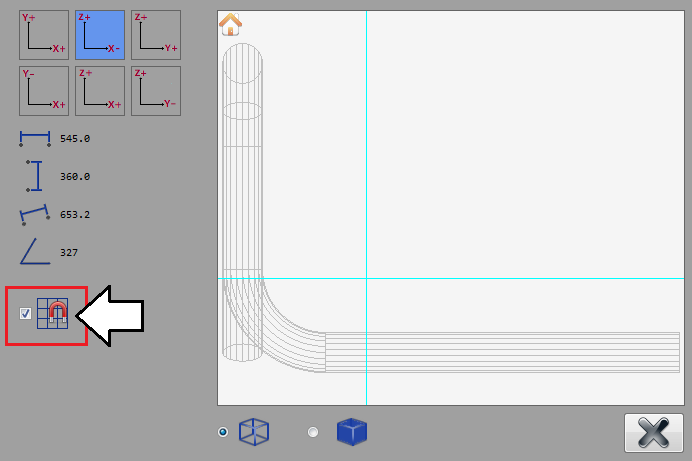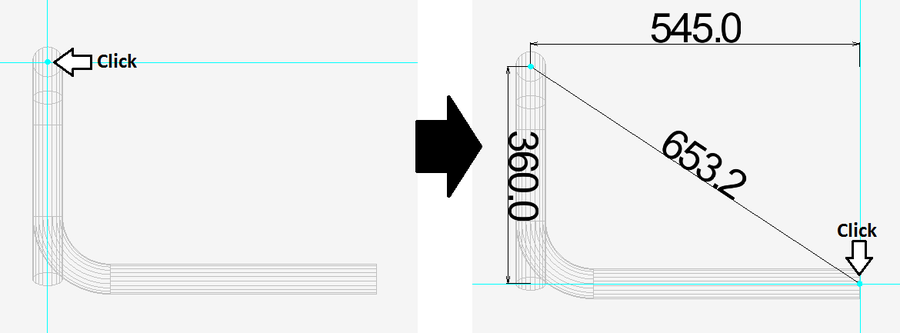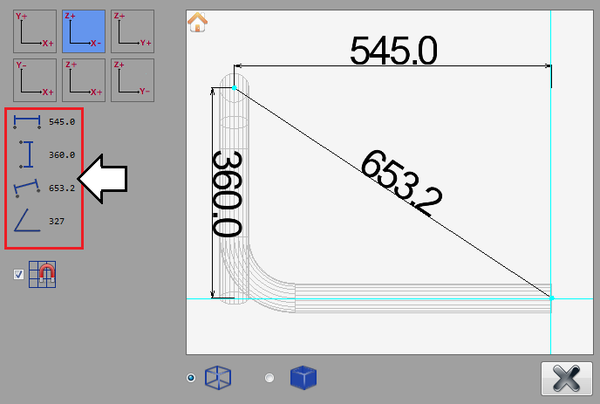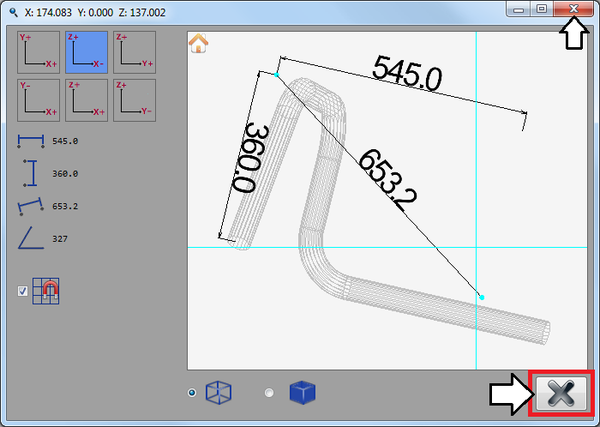Part Verify Tutorial
Contents
Introduction
This tutorial will step through the features and functions of the part verify plug-in.
The part verify plug-in is used to check part measurements to ensure the part design is correctly dimensioned.
Tutorial
Note
Before starting the tutorial, a part must be completed. This tutorial will be using the part that was created in the XYZ Designer Tutorial.
Step 1
Once the part design is complete, go to the top of the window and click on the tools menu. Select the part verify option from the drop down menu to access the part verify plug-in.
Step 2
The part verify window will open. There will be a 3D model of the part shown in the display frame to the right. The controls and options are shown to the left and below the display frame. The cursor location will be indicated by the light blue cross hair while in the display frame.
Step 3
In the top left corner, there will be 6 different tiles that represent the view of the part along each of the X, Y, and Z axes. These are used to control which direction the part is viewed from.
Step 4
Now, the first dimension will be placed.
First, click the point approximately at the center of the tube in the bottom right corner. This will be the starting point of the dimension. After that point is clicked, move the cursor away and the dimensions will be generated as the cursor moves. Next, click the point on the top outside edge of the straight length before the third bend to place the end of the dimension. See the image below. Once the dimension is placed, it may help to zoom out a bit (Use the mouse scroll wheel) to properly see each dimension.
Be aware that the dimensions placed on the part in the part verify window are temporary and will not remain on the part or affect the part design in any way.
Note: The dimension values displayed on the part may not be exactly the same as shown in the image below. This is because the chosen points are based solely on the accuracy of the mouse click when in 'free select mode'.
The part dimension values will be displayed on both the part model and on the panel on the left side of the window, as shown below. The dimension values on the left will list the horizontal, vertical, diagonal, and the angle measure of the diagonal dimension marker.
Step 5
Next, a new viewing direction will be chosen again.
Step 6
The part model can be viewed as a solid/shaded part or in wireframe. The options to control this are located just below the left corner of the part display frame.
Now, the part model will be switched to wireframe mode. To do this, click on the wireframe option as shown below.
Step 7
Next, instead of placing the dimension by choosing points freely, the snapping function will be activated. This will ensure the dimensions will snap to exact locations when placing the dimension start and end points. When this function is on, only specific points such as the starting edge of the part, the start of a bend, the apex, the center of the bend, or the ending edge of the part can be selected.
Activate the snapping function by checking the box next to the snapping icon (grid & magnet), as shown below.
Step 8
Now, another dimension will be placed.
First, click the point at the center of the tube in the upper left corner to place the start of the dimension. Click the point at the starting edge of the part in the bottom right corner to place the end of the dimension.
Note: In this case, the dimension values should match the dimensions shown in the image below. Since the snapping functions forces the dimensions to snap to specific points, the dimension will be quite precise.
Again, the part dimension values will be displayed on both the part model and on the panel on the left side of the window, as shown below.
Step 9
The part model can be zoomed in/out, moved, and rotated.
Zoom in and out using the mouse scroll wheel or by pressing the plus [+] or minus [-] keys on the keyboard.
Rotate the part by clicking and holding the right mouse button and moving the cursor around.
Move/pan the part around by clicking both mouse buttons and moving the cursor. The num pad keys can also be used to move the part. Press num 8 to move up, 2 to move down, 4 to move left, and 6 to move right.
Step 10
The tutorial is complete!
Click the close button in the bottom right corner or the red X in the upper right to exit the part verify plug-in window.
See the Part Verify page for information on each individual function used in this tutorial.
